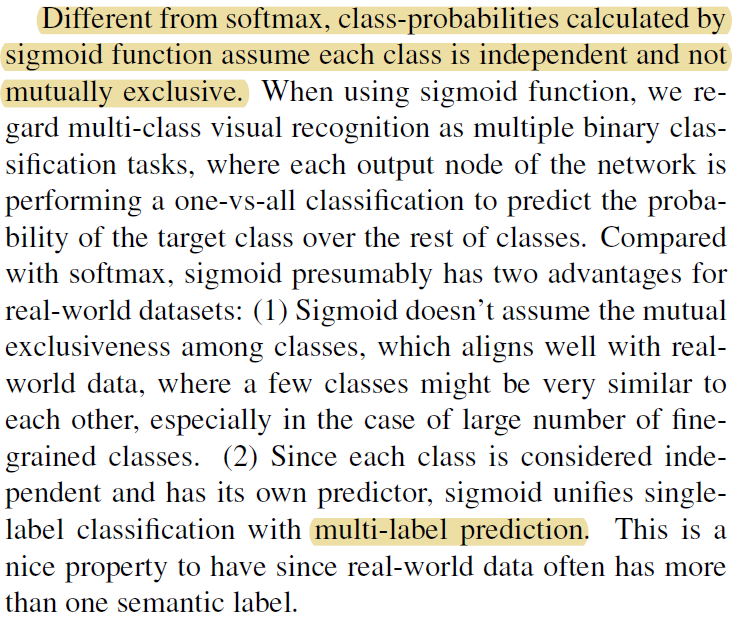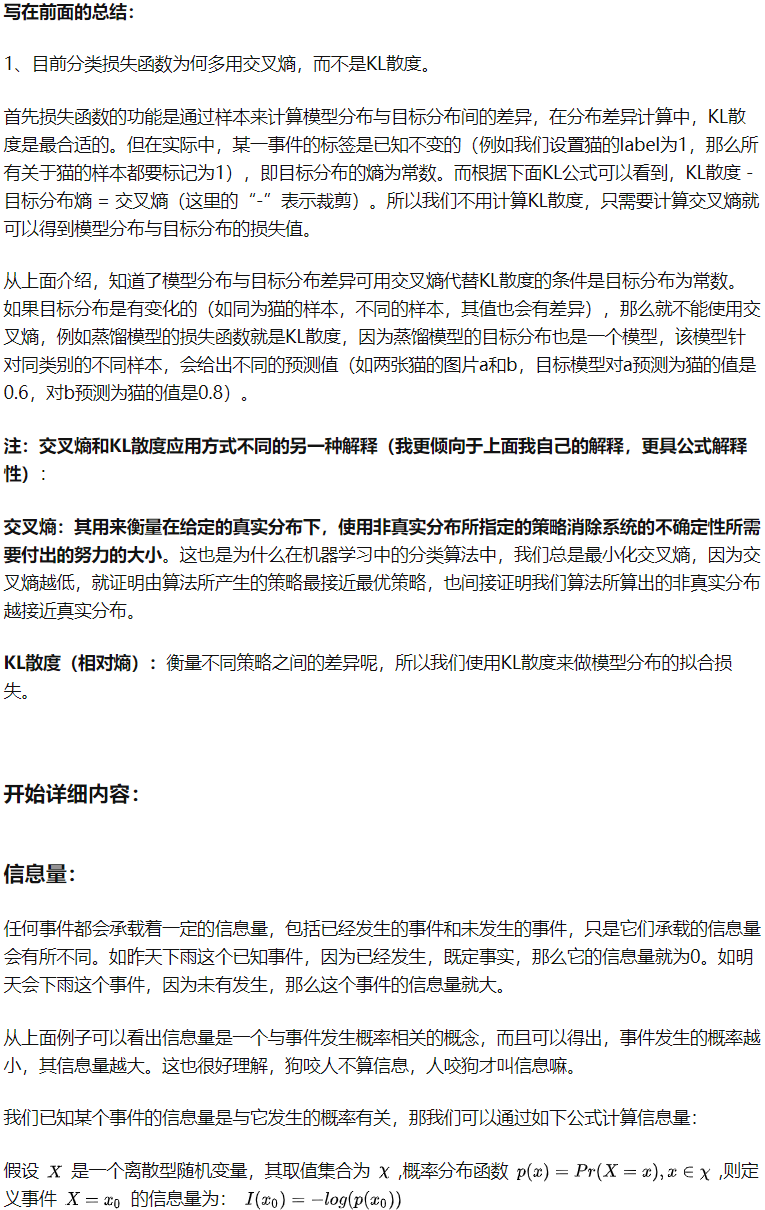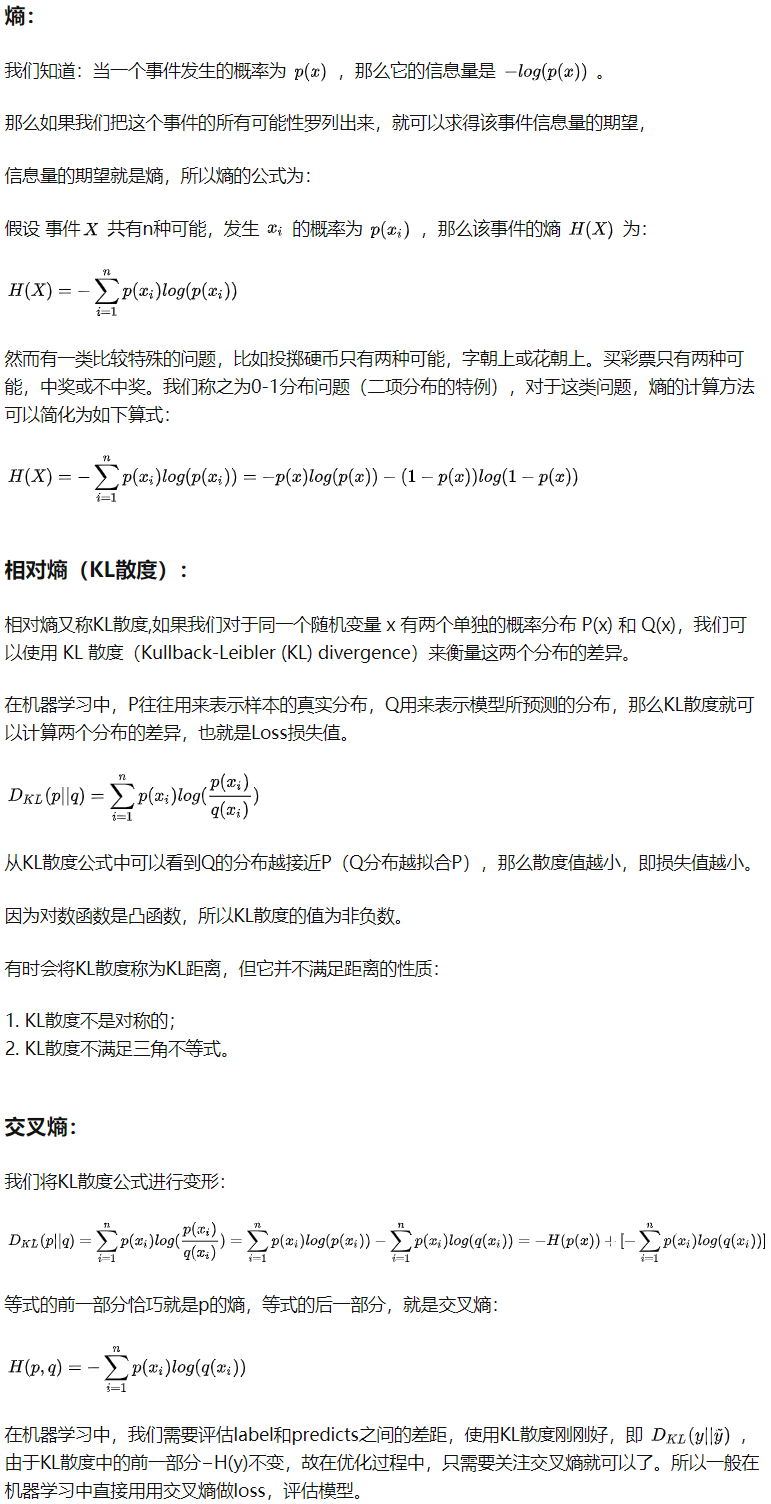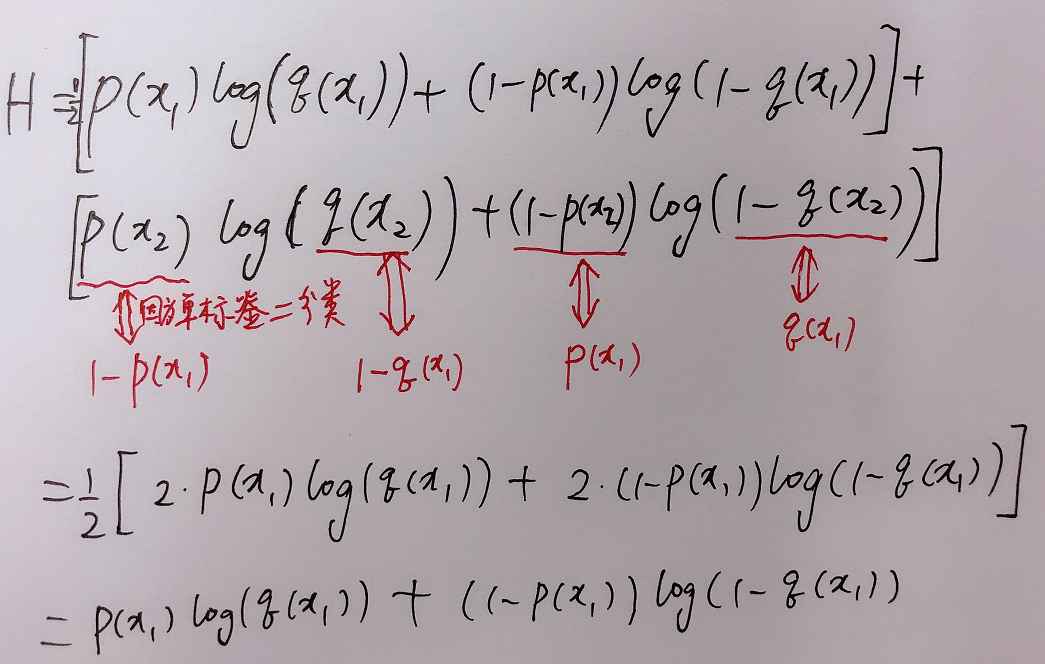一、pytorch中各损失函数的比较
Pytorch中Softmax、Log_Softmax、NLLLoss以及CrossEntropyLoss的关系与区别详解
Pytorch详解BCELoss和BCEWithLogitsLoss
总结这两篇博客的内容就是:
- CrossEntropyLoss函数包含Softmax层、log和NLLLoss层,适用于单标签任务,主要用在单标签多分类任务上,当然也可以用在单标签二分类上。
- BCEWithLogitsLoss函数包括了Sigmoid层和BCELoss层,适用于二分类任务,可以是单标签二分类,也可以是多标签二分类任务。
- 以上这几个损失函数本质上都是交叉熵损失函数,只不过是适用范围不同而已。
第一条的原因是:

也就是说,各个class的得分是互斥的,这个class得分多了,另个class的得分会减少。
第二条的原因是:

也就是说,各个class的得分是独立的,互不影响,所以可以进行多标签预测。
二、程序示例
在使用中,最常遇到的情况是,CrossEntropyLoss的input是一个二维张量,target是一维张量,例如:
loss = nn.CrossEntropyLoss() input = torch.randn(3, 5, requires_grad=True) # 3个样本,5个类别 target = torch.empty(3, dtype=torch.long).random_(5) # torch.long表示长整型,torch.empty(3)表示产生一维向量,长度为3,元素内容为空。 # random_(5)表示用0到4的整数去填充3个空元素。之所以是整数,是因为前面规定了torch.long。 output = loss(input, target) output.backward()
CrossEntropyLoss的计算公式为(本质上是交叉熵公式+softmax公式):

BCEWithLogitsLoss和BCELoss的input和target必须保持维度相同,即同时是一维张量,或者同时是二维张量,例如:
m = nn.Sigmoid() loss = nn.BCELoss() # input和target同为一维张量 input = torch.randn(3, requires_grad=True) target = torch.empty(3).random_(2) # 单标签二分类任务 output = loss(m(input), target) output.backward() # input和target同为二维张量 input = torch.randn([5, 3], requires_grad=True) target = torch.empty([5, 3]).random_(2) # 多标签二分类任务 output = loss(m(input), target) output.backward()
-------------------------------------------
loss = nn.BCEWithLogitsLoss() # input和target同为一维张量 input = torch.randn(3, requires_grad=True) target = torch.empty(3).random_(2) # 单标签二分类任务 output = loss(input, target) output.backward() # input和target同为二维张量 input = torch.randn([5,3], requires_grad=True) target = torch.empty([5,3]).random_(2) # 多标签二分类任务 output = loss(input, target) output.backward()
三、交叉熵损失函数的推导
以下的内容摘自知乎:交叉熵、相对熵(KL散度)、JS散度和Wasserstein距离(推土机距离)


对于二分类问题,假设是猫和狗的分类问题,则p(x=猫)=1-p(x=狗),同样地q(x=猫)=1-q(x=狗),所以,对于某一张图片(样本),它的损失可通过如下公式计算:

这个二分类公式其实是cross entropy between two Bernoulli distribution。这个公式不仅可以用于单标签的二分类问题,也可以用于多标签的二分类问题。在pytorch的BCEWithLogitsLoss函数或者BCELoss函数中,实际计算公式是这样的:

式中,n是指总的类别数目,这个公式指的是单个样本的损失。对单标签二分类时,即当n=2时,(2)式和(1)式等价,证明:

简单的算例证明可以参考知乎:pytorch中的损失函数总结 第6小节